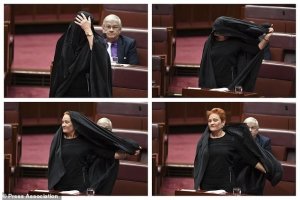- Home
- News & Blogs
- About Us
- What We Do
- Our Communities
- Info Centre
- Press
- Contact
- Archive 2019
- 2015 Elections: 11 new BME MP’s make history
- 70th Anniversary of the Partition of India
- Black Church Manifesto Questionnaire
- Brett Bailey: Exhibit B
- Briefing Paper: Ethnic Minorities in Politics and Public Life
- Civil Rights Leader Ratna Lachman dies
- ELLE Magazine: Young, Gifted, and Black
- External Jobs
- FeaturedVideo
- FeaturedVideo
- FeaturedVideo
- Gary Younge Book Sale
- George Osborne's budget increases racial disadvantage
- Goldsmiths Students' Union External Trustee
- International Commissioners condemn the appalling murder of Tyre Nichols
- Iqbal Wahhab OBE empowers Togo prisoners
- Job Vacancy: Head of Campaigns and Communications
- Media and Public Relations Officer for Jean Lambert MEP (full-time)
- Number 10 statement - race disparity unit
- Pathway to Success 2022
- Please donate £10 or more
- Rashan Charles had no Illegal Drugs
- Serena Williams: Black women should demand equal pay
- Thank you for your donation
- The Colour of Power 2021
- The Power of Poetry
- The UK election voter registration countdown begins now
- Volunteering roles at Community Alliance Lewisham (CAL)
Muslim photoshopped to spread fear
Culture wars are a pyrrhic endeavour: they leave a sea of causalities and even the winners stand shallow having defind themselves as what they are not rather than who they are or might be. The clash of culture, race, and religion is a concerted effort that mobilizes entire segments of the population that would otherwise simply not care.
Case in point, on August 28 th, the Times’ Chief Investigative Reporter, Andrew Norfolk, sensationally reported that a 5-year-old “white, Christian” girl had been forced to live with a Muslim foster family in Tower Hamlets. Furthermore, the piece suggested that the girl had been mistreated because she was a “white Christian”. This account was sensationalized to the point that it cracked wide open the proverbial Pandora’s Box of Islamophobia, bigotry, and violent ignorance.
To some the Western Christian edifice was about to collapse because a Muslim Family were caring for a Christian girl.
It is clear that the Times—not only got the story horribly wrong and sensationalized the life of a child— but also wanted to provoke wider society.
The picture used by the Times was a generic image of a woman wearing a burqa holding the hand of a small child. Whether the picture was in fact of the young girl and her foster mother in question is doubtful. However, inserting a photograph of a Muslim woman wearing a burqa, holding the hand of a small blonde child, the story appealed to readers’ subconscious fears that their Western liberal identity was being taken from them. It knowingly promoted the archetypal trope of the subjugated Muslim woman through the visual cue of the burqa. Then, following suit, the Daily Mail echoed the Times and published their own account of the story, and accompanied it with a stock image of a woman wearing a burqa. Yet, the same, original image was of a Muslim woman wearing a hijab, which completely exposed her face, radiantly smiling. The story was clearly photoshopped.
Using the burqa as an instrument for Western hate has been a recurring theme in recent far-right propaganda, especially throughout Europe. Nevertheless, this is far from a European problem alone: anti-immigration and anti-integration discourse has been creeping in parliaments all over the world.

Let us not forget Australian Senator Pauline Hanson early in August of this year, who walked into the Australian Senate wearing a burqa to underscore her party's intentions to ban the religious garment, citing national security reasons.
However, even more interestingly, the image of the frail Muslim woman covered by a heavy, draping burqa is not only appealing to the far-right as part of their movement against the integration of Muslims in European countries, but it seems to also appeal to those liberals who vindicate women’s rights. Essentially, the picture was photo-shopped to reach the sensitivity of not only the conservatives but that of the liberals as well.
One would hope that the Times acted in good faith but the consequence of publishing an image as striking as the one that accompanied the article had the effect of contributing to the rise of Islamophobia.
Images are often stronger than words and this picture in particular engaged with those who couldn’t wait to add the story to the list of reasons why the Islamic faith shouldn’t be tolerated in a Western, liberal nation. As the culture war continues to plague European democracies, and western, liberal morals are called upon to judge the Islamic faith, one must ask why this story of a 5-year-old foster child was chosen to be aggrandized.
“As history shows, all the way from the medieval legend of Hugh of Lincoln, a Christian boy whom Jews were said to have murdered, to the satanic panics of the 1980s and 1990s, the belief that a religious minority is mistreating children of the majority can inspire moral panics at best and pogroms at worst”, started to explain the Guardian in an editorial recently published.
Articles that promote images such as the one that accompanied Norfolk’s article create senseless scaremongering. A self-glorifying society should be more concerned with protecting its children than wrongly perpetuating alarmist rhetoric that digs a deeper cleavage between countrymen—of all religions.
By Maria Julia Pieraccioni, OBV Intern
